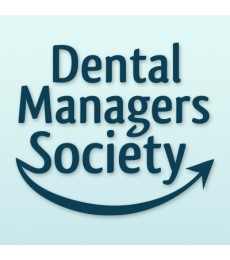The growth of Dental Service Organizations (DSOs) within the dental industry and their control over individual dentist-owned practices has been exponential in the past few years. DSOs are attractive to dentists who do not desire to be burdened with the administrative costs or managerial duties of running a dental practice. Consumers seem to flock to the discount dental services provided by DSOs that can afford to lower prices because of economies of scale and other factors. So how does an individual dentist protect themselves when a DSO makes an attractive proposal to manage their practice?
There are a variety of state dental regulations restricting ownership of dental practices to licensed dentists. Massachusetts is still among the states which have explicit regulations preventing dental practices from being owned totally or in part by non-dentists. Enter the DSO model which places legal ownership of the practice in the hands of a licensed dentist, with the DSO managing the practice and taking revenue from it through a separate contract with the dentist. The abuse of this model has been challenged by regulatory bodies in states like New York, where “sham” dental practice owners of chains like Aspen Dental were exposed to the extent that they were creating non-dentist control over treatment. The harm to patients resulting from this absence of control by dentists over their treatment was an important factor in these decisions.
But the model of DSOs managing the practice for a dentist while he or she focuses on treatment is still beneficial, as long as practice management agreements between dentists and the DSO are constructed to preserve dentists’ control over clinical aspects of the practice. Almost every part of the practice management agreement must emphasize that a licensed dentist controls clinical decisions. References to dentists’ control over patient evaluation, diagnosis and treatment, treatment records, protocols, and quality assurance, and hiring and supervision of dental professionals must be included. Decisions like referrals out to specialty practices of more complex treatments, even if they are more profitable for the practice if done in-house, must be made by the dentist and not the non-dentist looking at the economic bottom line instead of the welfare of the patient.
Dentists must realize that, as owners, they should have some say in the exit portions of the agreements, including sale of the practice. After all, the dentist owner technically and practically still owns the patient goodwill of the practice, since the patient base most likely associates the dentist more closely with their treatment than the DSO. Goodwill is nearly 80% of the value of most practices, and the dentist should reap financial rewards for building up that value. In addition to good salary or collections percentages while still employed at the practice there should be financial incentives for the dentist available in exit or sale provisions.
Dentists should watch for abilities retained by DSOs to establish things like quotas or the types of treatment that management can decide to concentrate on. Dentistry is not an assembly line concentrating on the profitability of what kind of treatments are provided and how fast they can be produced.
While DSO management can make sure the practice conforms to dental regulations in compliance areas like infection control, the Board of Registration in Dentistry has control over the disciplinary process for dentists who are associated with violations in these areas. A dentist cannot get caught up in violations existing because of non-dentist negligence, since their license is on the line. Often a position such as a dental director allows the official designation of a licensed dentist with supervisory authority over these subjects.
With DSOs, the intricacies of the contractual relationship set up by the DSO in language they provide must be reviewed carefully by an attorney dealing specifically with the dental industry. Otherwise, the beneficial parts of the relationship can be offset if the “devil is in the details.”


